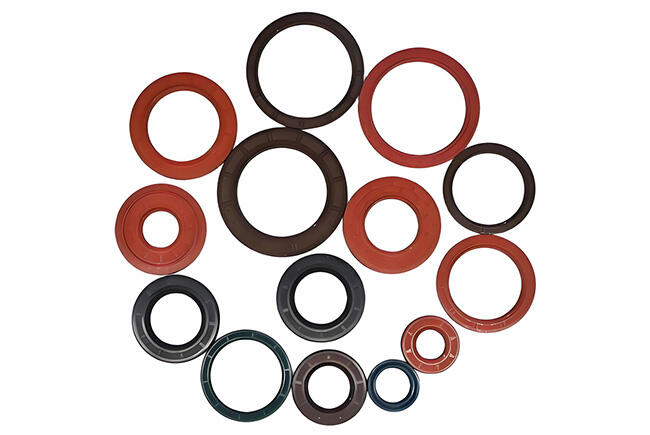The automotive engine is a complex system involving high-speed rotation, fluctuating temperatures, and constant exposure to oil and combustion byproducts. Among the many components ensuring smooth operation, oil seals—also known as radial shaft seals—play a key role in preventing oil leakage and keeping contaminants out of sensitive engine areas. Choosing the right oil seal for an engine is not a simple task; it requires an understanding of materials, structure, and working conditions.
This article introduces the fundamentals of engine oil seal selection, followed by a Q&A section to address common concerns.
1. Basic Functions of Engine Oil Seals
Oil seals are used to close off spaces between rotating and stationary components, typically at crankshafts, camshafts, and timing covers. They serve two main purposes:
Prevent oil from leaking out of the engine.
Block dirt, water, and other contaminants from entering.
A high-quality seal must maintain its elasticity under varying temperatures and pressures, while resisting chemical degradation over time.

2. Key Factors in Oil Seal Selection
a. Material Compatibility
The sealing material must withstand long-term exposure to engine oil, fuel vapors, and temperature changes.
NBR (Nitrile Rubber): Suitable for moderate temperatures and oil resistance.
FKM (Fluorocarbon Rubber): Offers higher resistance to heat and chemicals, ideal for modern engines.
Silicone or PTFE (in some cases): Used in specialized applications where low friction or extreme temperature tolerance is needed.
b. Operating Conditions
Consider engine type, rotational speed, temperature range, and oil type. High-speed engines may require seals with integrated spring tensioners or low-friction lips to ensure tight sealing and reduce wear.
c. Seal Design
Common types include TC (double-lip), SC (single-lip), and V-ring styles. The right design ensures a balance between flexibility, durability, and pressure resistance.
Q&A: Engine Oil Seal Selection
Q1: Can I use any oil seal with the same dimensions?
A: No. While size is important, the material and design must also be compatible with engine conditions. Using the wrong type may lead to premature failure or leakage.
Q2: How do I know which material is right for my engine?
A: For standard engines, NBR often performs well. For turbocharged or high-temperature engines, FKM is more suitable due to its superior heat and chemical resistance.
Q3: What are signs that an oil seal needs replacement?
A: Common signs include oil leaks around the crankshaft or camshaft, burning oil smell, or low engine oil levels despite no external leaks.
Q4: Are OEM oil seals better than aftermarket ones?
A: Not always. The key is to ensure the seal meets or exceeds the original equipment specifications in both material and performance.
Conclusion
Selecting the correct oil seal for an automotive engine requires careful consideration of material properties, seal structure, and engine specifications. Whether for a compact car or a high-performance vehicle, the right oil seal ensures efficient lubrication, protects internal components, and contributes to engine longevity.
Before purchasing, always confirm compatibility with your engine model, consult technical specifications, and—if in doubt—seek guidance from a sealing specialist or trusted supplier. Thoughtful selection leads to fewer breakdowns and better overall performance.
 Hot News
Hot News